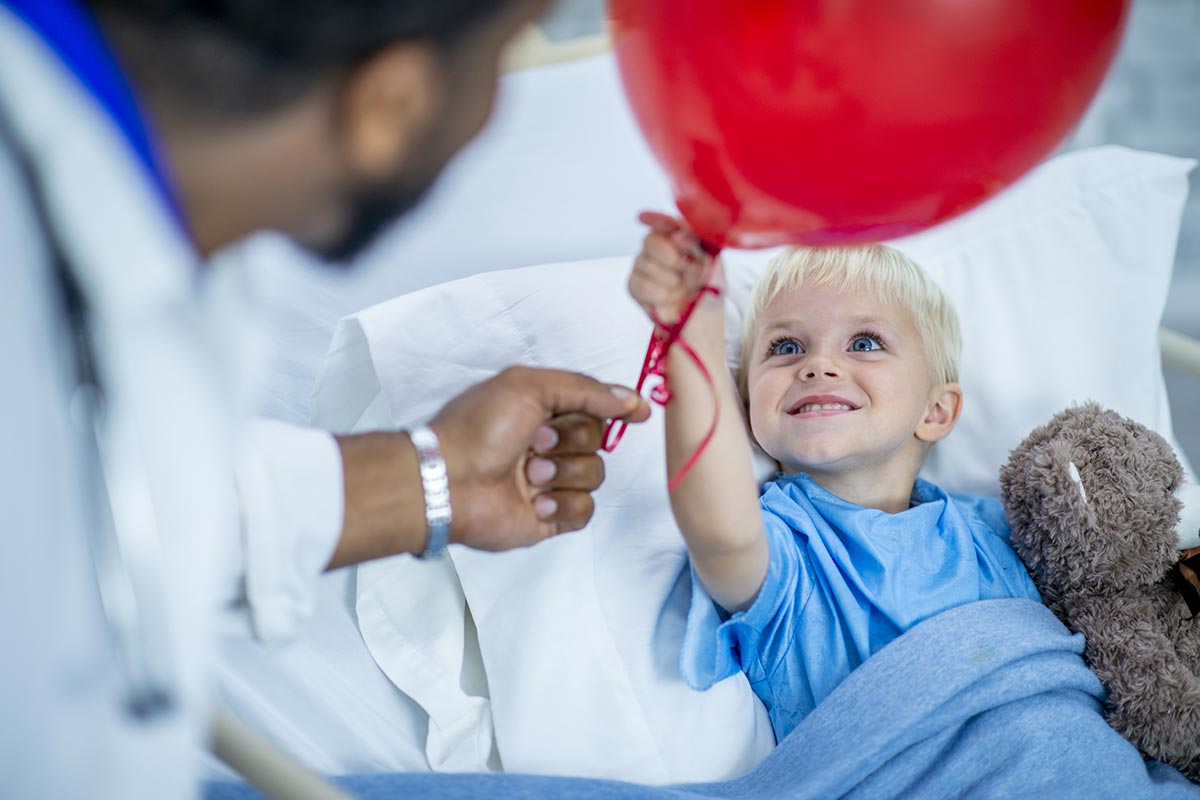Last Updated on November 13, 2025 by
Childhood cancer, also known as pediatric cancer, is a complex disease that affects thousands of kids worldwide. Nearly 400,000 new pediatric cancer diagnoses occur annually, with leukemia being the most common type among children aged 0-14. While most cases are not directly hereditary, recent studies suggest that almost 10% of childhood cancers are linked to inherited genetic predispositions.

We are starting to understand the genetic basis of these cancers. This includes the role of inherited genetic mutations and environmental factors. This knowledge is key to developing effective prevention and treatment strategies.
Every year, about 400,000 children are diagnosed with cancer. This shows how important it is to spread awareness and fund research. Childhood cancer affects families worldwide, making it a major health issue.
Childhood cancer’s global impact is huge, with around 400,000 new cases every year. This number highlights the need for worldwide cooperation in fighting this disease. The World Health Organization (WHO) sees childhood cancer as a big public health problem. They urge for more awareness and better access to care.

The most common childhood cancers are:
Each cancer type needs its own treatment plan. Knowing how common they are helps us use resources better.
There’s been a big improvement in treating childhood cancer, mainly in rich countries. The 5-year survival rate for childhood cancer is now over 80% in these places. But in poor countries, the rate is less than 30%.
“The gap in survival rates between rich and poor countries is a clear call to action for global health efforts to fix the unfairness in cancer care.”
To help more kids survive, we need to make treatments more available. We also need to improve healthcare systems and fund research into childhood cancer.
The genetics of childhood cancer are complex. It’s caused by both genes and the environment. This makes it hard to treat and understand.
Cancer in kids starts with genetic mutations. These mutations can happen by chance or be passed down from parents. “Genetic mutations are the fundamental drivers of cancer development,” say top cancer researchers.
When cells divide, they must copy their DNA correctly. Mistakes can cause mutations. These can turn on genes that help cancer grow or turn off genes that stop it.

Genetic mutations can be inherited or happen by chance. Inherited ones come from parents, while spontaneous ones occur in a person’s lifetime. They can be caused by the environment or DNA errors.
Most childhood cancers come from new mutations or the environment. But about 10% are due to inherited genes. Knowing the difference helps in finding the right treatments.
The “10% rule” says that about 10% of childhood cancers have inherited causes. This means many cases have a family link. Families with a cancer history should get genetic counselling.
Knowing about hereditary risks helps catch cancer early. It shows the need for genetic testing and family advice in cancer families.
Understanding childhood cancer’s genetics helps us find better ways to prevent and treat it. This research is key to helping kids with cancer.
Finding hereditary cancer syndromes in kids takes a team effort. It involves genetic tests and family talks. We know how key it is to grasp the genetic links to childhood cancer.
Hereditary cancer syndromes are a big worry in kids’ cancer care. Some genetic conditions make kids more likely to get cancer. We’ll look at common inherited cancer risks and how genetic tests and family talks help.
Many genetic syndromes raise a child’s cancer risk. These include:
These syndromes show why genetic screening and watching are key for at-risk kids.
Congenital cancers are rare and happen when a child is born with or gets cancer soon after. The exact causes are often a mystery, but genetic mutations might be involved. We’re dedicated to figuring out these cases to give the best care.
Genetic tests can spot kids at risk of hereditary cancer syndromes. This lets us start early monitoring and care. Family counselling is also key, helping families deal with these tough issues.
We stress the need for a full plan that includes genetic tests and family talks. This way, we can tailor care and support to each child and their family.
Understanding childhood cancer involves looking at non-hereditary factors. While genetics are part of it, most cases come from a mix of genetic and external factors.
Some environmental factors increase the risk of childhood cancer. Radiation exposure is a known risk. This can happen from X-rays or other ionizing radiation before birth.
Exposure to chemicals and pesticides also raises the risk. We must think about infections during pregnancy. Some infections may increase the risk of childhood cancer, but we don’t fully understand how.
Prenatal and early life factors are also important. Maternal health, like diet and toxin exposure, can affect the risk of childhood cancer.
Childhood cancer rates have changed over time. Some types are more common, while others are rare. We need to look at population changes, environmental factors, and better diagnostic tools.
Research shows both genetic and environmental factors are key. More study is needed to find ways to prevent and treat childhood cancer.
Understanding childhood cancer is key to finding better ways to prevent and treat it. Research is finding out more about why childhood cancer happens. New ways to test genes and treat cancer give us hope for better results.
At least 15% to 20% of childhood cancers are linked to genetic mutations. This shows how important genetic testing and watching for signs are.
The American Association for Cancer Research has made big steps in dealing with hereditary cancer in kids. New tech like liquid biopsies and whole-body MRI could make testing easier and less scary for families. We need to keep supporting research and prevention to fight childhood cancer.
By focusing on prevention, research, and hope, we can aim for a future where every child can grow up healthy. Our work to understand and tackle childhood cancer will lead to better care and outcomes for those affected.
Cancer in kids is caused by a mix of genetic and environmental factors. Most cases aren’t passed down, but about 10% are linked to inherited genes.
Yes, some kids are born with cancer, known as congenital cancer. This happens when cancer forms in the fetus during pregnancy.
Leukemia is the top childhood cancer, followed by brain tumours and lymphomas.
Childhood cancer comes from a mix of genetic and environmental factors. Genes, spontaneous mutations, and environmental factors all play a part.
Kids get cancer from genetic mutations, which can be inherited or happen on their own. Environmental and prenatal factors also play a role.
The rise in childhood cancer isn’t fully understood. Changes in environment, lifestyle, and genes might be factors.
Cancer has no single cause. It’s a mix of genetic, environmental, and lifestyle factors that lead to it.
A child can be born with cancer if genetic mutations happen during fetal development. This leads to cancer cells forming.
Preventing childhood cancer is hard, but reducing toxins and living healthily can help. Genetic testing for high-risk families is also important.
Kids get cancer from genetic mutations, environmental factors, and more. Understanding these causes helps in finding better ways to prevent and treat it.
Childhood cancer is caused by a mix of genetic, environmental, and lifestyle factors. More research is needed to fully understand it.
Subscribe to our e-newsletter to stay informed about the latest innovations in the world of health and exclusive offers!